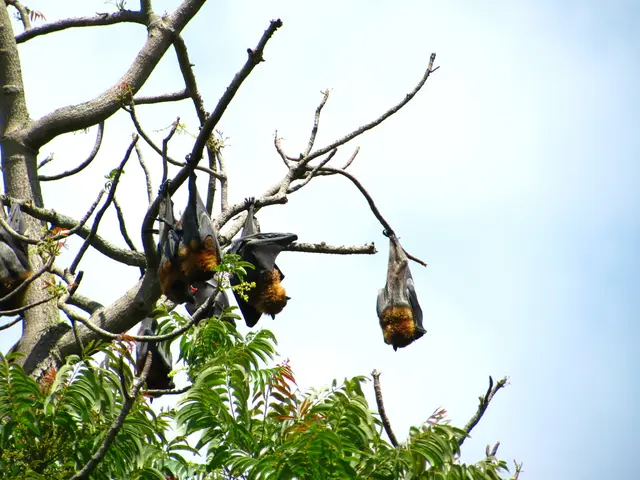Explore a three-dimensional journey through the Galaxy, gains an aerial perspective of the Milky Way as revealed by a recent visualization
The European Space Agency's Gaia mission has created the most accurate 3D map of our home galaxy, the Milky Way, to date. This remarkable achievement, based on Gaia's observations of over 44 million 'ordinary' stars and 87 rare 'O-type' stars, offers a detailed look at the processes that shape our local galactic environment.
The 3D map provides an invaluable tool for astronomers, helping them understand interactions between the warm and cold components of the local Universe. The distribution of ionised gas in the local Milky Way, as shown in the map, matches other telescopes' observations of the sky exceptionally well.
The 3D animation of the star streams in the Milky Way, based on Gaia mission data, was created by researchers at the Max Planck Institute for Astrophysics. This animation reveals the motions and positions of millions of nearby stars, enabling scientists to map the location of stars and interstellar material near the Sun.
One of the most intriguing discoveries from the 3D map is the observation of some clouds in star-forming regions that have broken open, allowing gas and dust to stream into a huge cavity. This finding offers insights into the dynamic nature of star formation within our galaxy.
Lewis McCallum, an astronomer at the University of St Andrews, stated that the 3D map provides the first accurate view of what our section of the Milky Way would look like from above. The regions depicted in the 3D map are well-known to astronomers, but the Gaia data shows what they look like in 3D, offering a fresh perspective on these familiar celestial landscapes.
The 3D map stretches out to a distance of 4,000 light-years from our Solar System, with our Sun in the centre. It includes views of notable celestial objects such as the Gum Nebula, the North America Nebula, the California Nebula, and the Orion-Eridanus superbubble.
The 3D map is not only a testament to the power of Gaia's observations but also a stepping stone for future discoveries. Gaia's fourth data release will contain data of even better quality and quantity, making it possible to further advance our knowledge of star-forming regions. Plans are to extend the map to cover an even larger region of our Galaxy once Gaia has released its new set of data.
The creation of this 3D map required huge computational power, but it was well worth the effort. The map not only provides a detailed look at our local galactic environment but also offers a unique opportunity to learn more about giant O-type stars and how they energise gas in our Galaxy. The 'extinction' of stars, which refers to Gaia's view of starlight blocked by thick cosmic dust, is a crucial ingredient in creating these 3D maps. Scientists use this information to create maps showing where dust is distributed in the Milky Way, and those maps reveal the location of ionised hydrogen gas, a telltale sign that new stars are being born.
In conclusion, the Gaia 3D map of the Milky Way is a significant milestone in our understanding of our galaxy. It offers a detailed look at star-forming regions, provides insights into the dynamic nature of star formation, and offers a unique opportunity to learn more about giant O-type stars. The map is a testament to the power of space exploration and the potential for future discoveries.
Read also:
- United States Secures $632 Million to Fuel Electric Vehicle Revolution
- Clean energy companies HyFlux and AMRC secure financing from ATI for game-changing advancements in aeroplane cooling systems linked to clean aviation.
- DKSH Upgrades Distribution Operations Through Significant Technological Renovation
- Vegetable oils are similarly utilized in the process of road cleaning.








